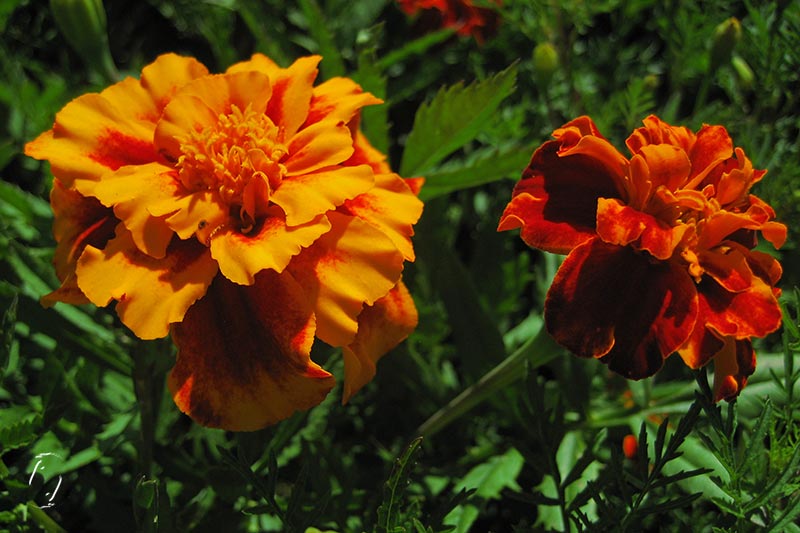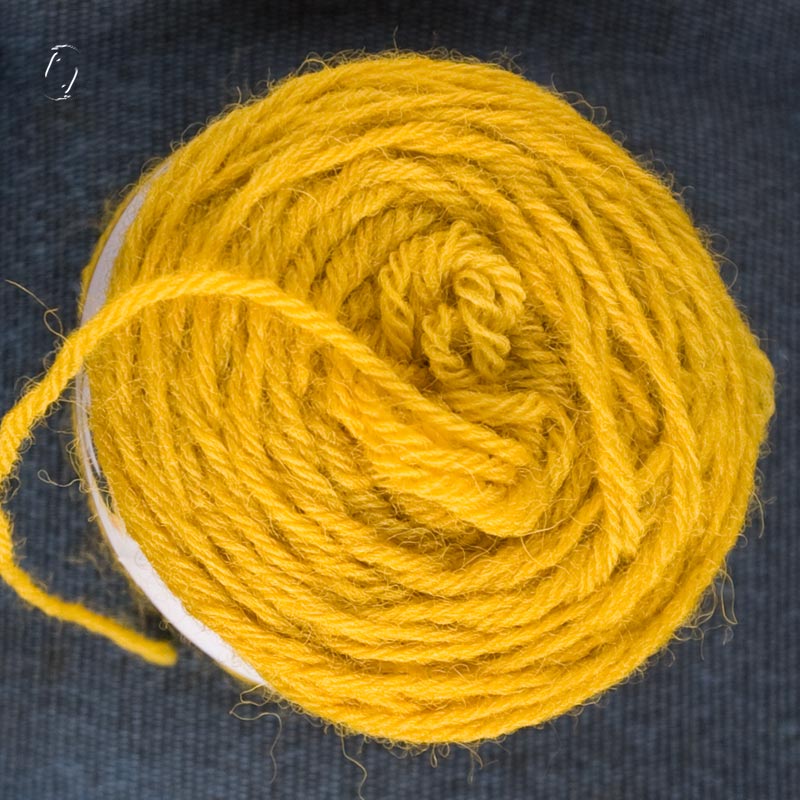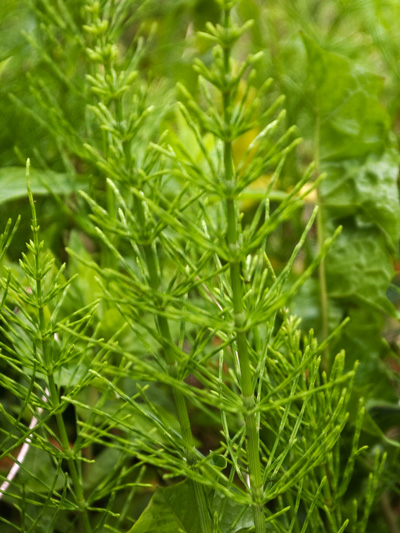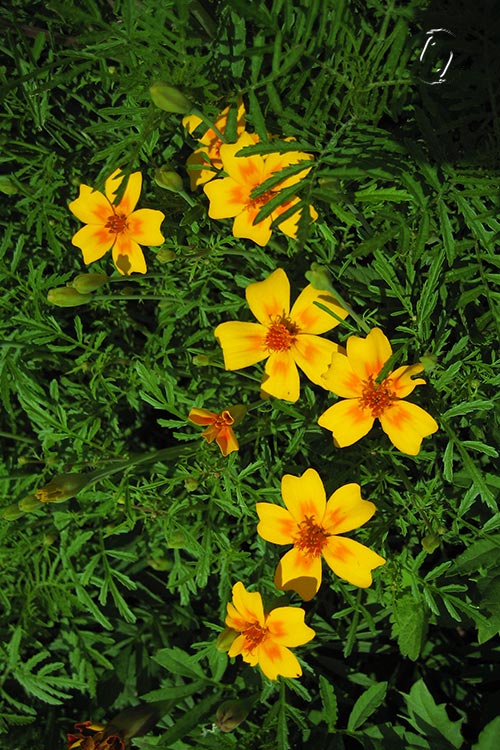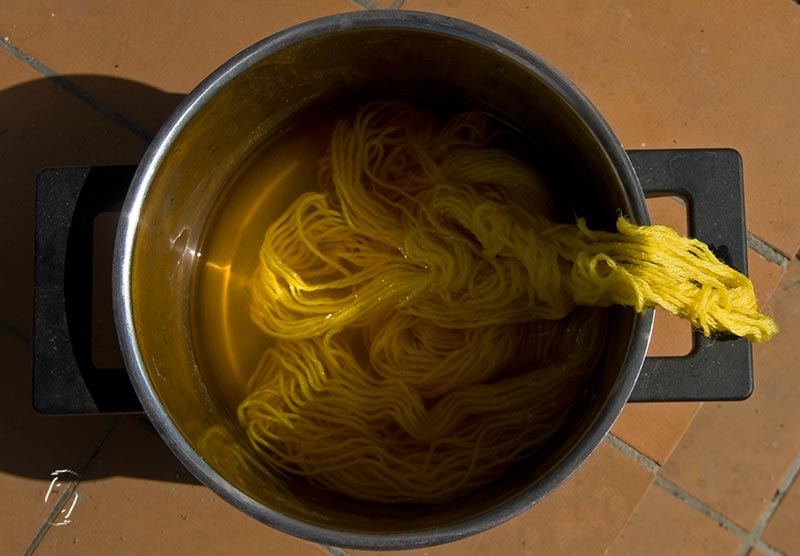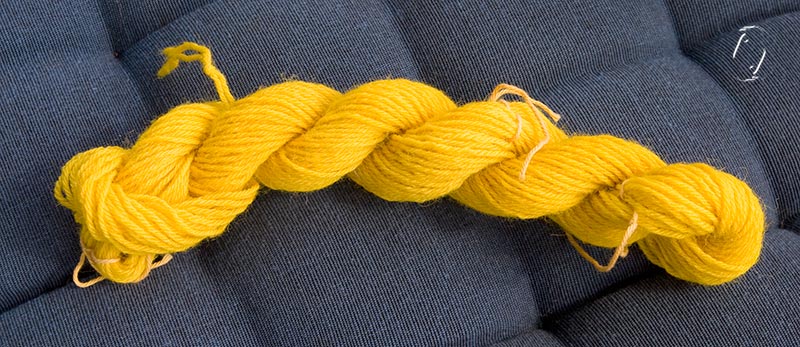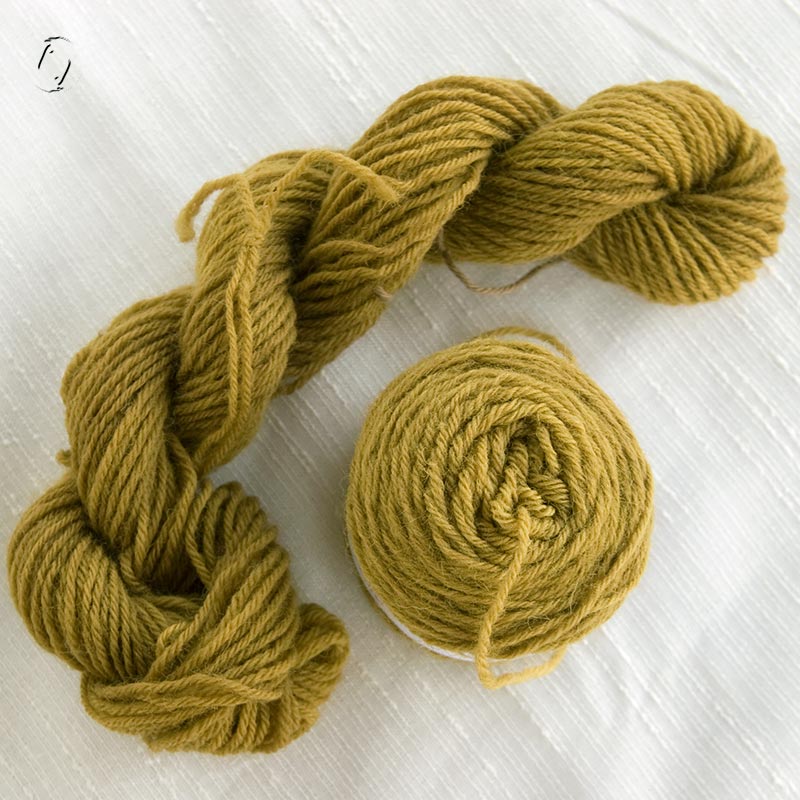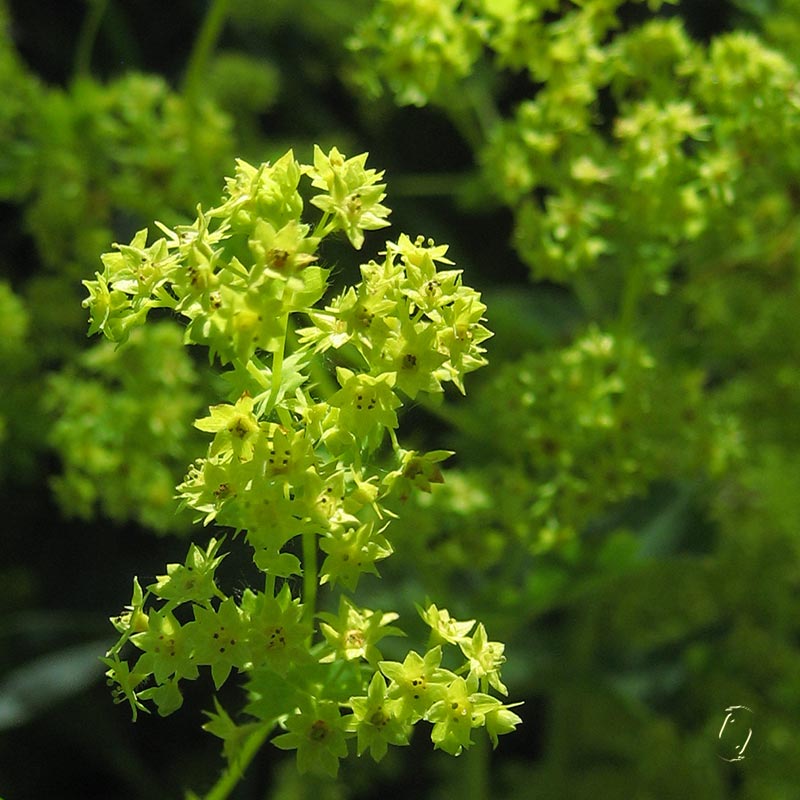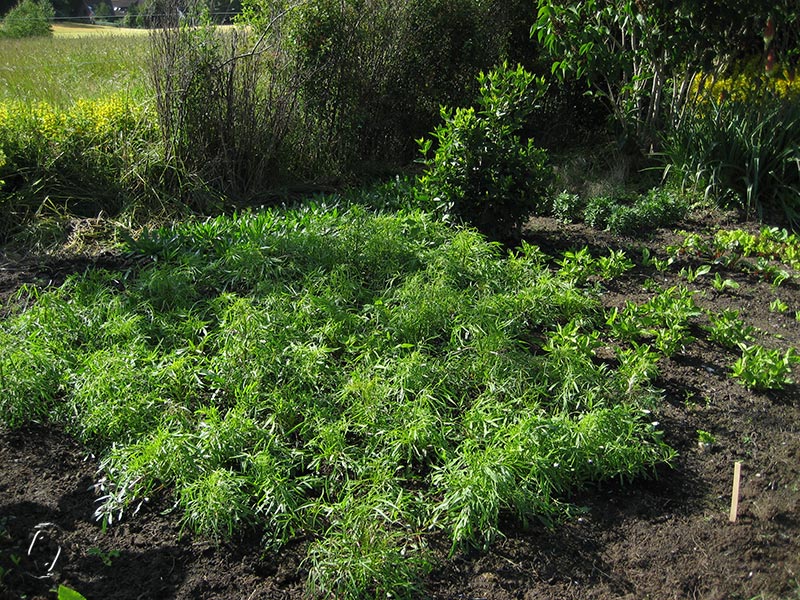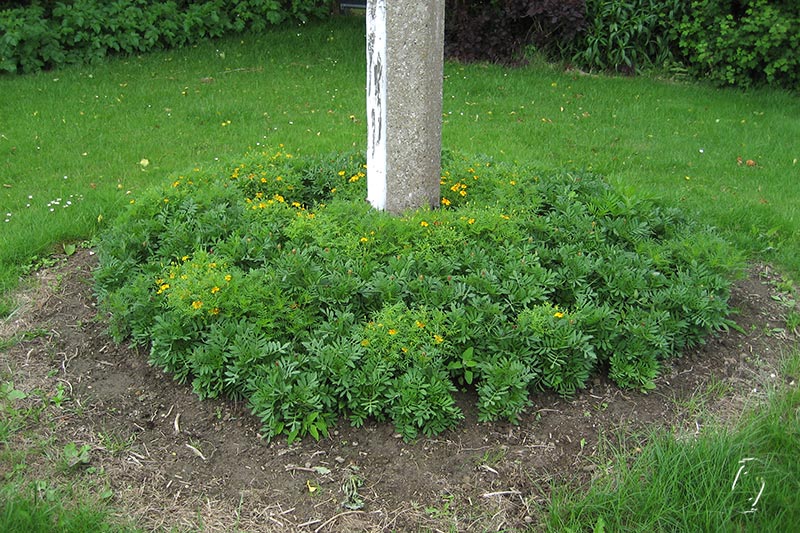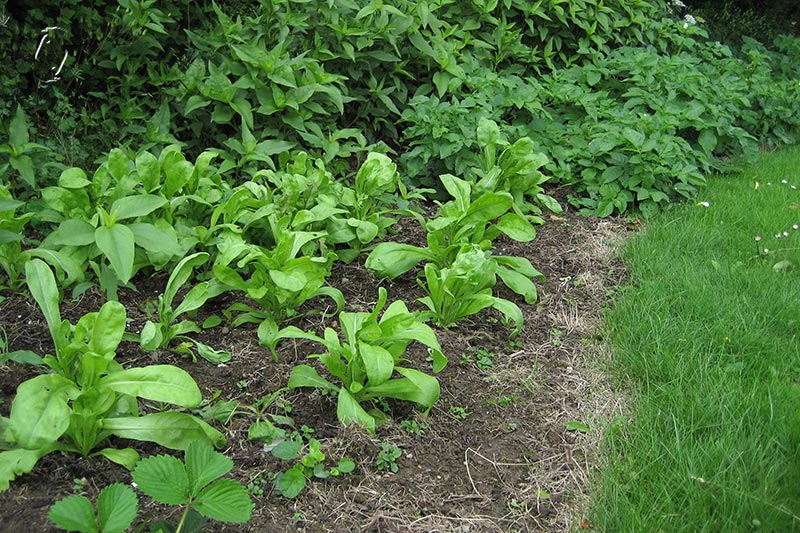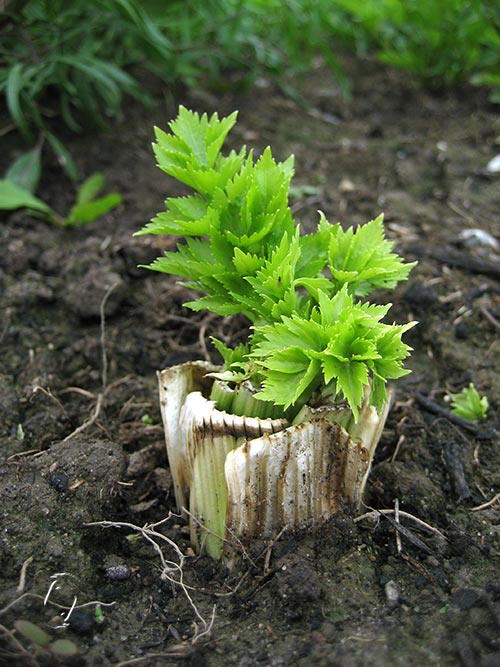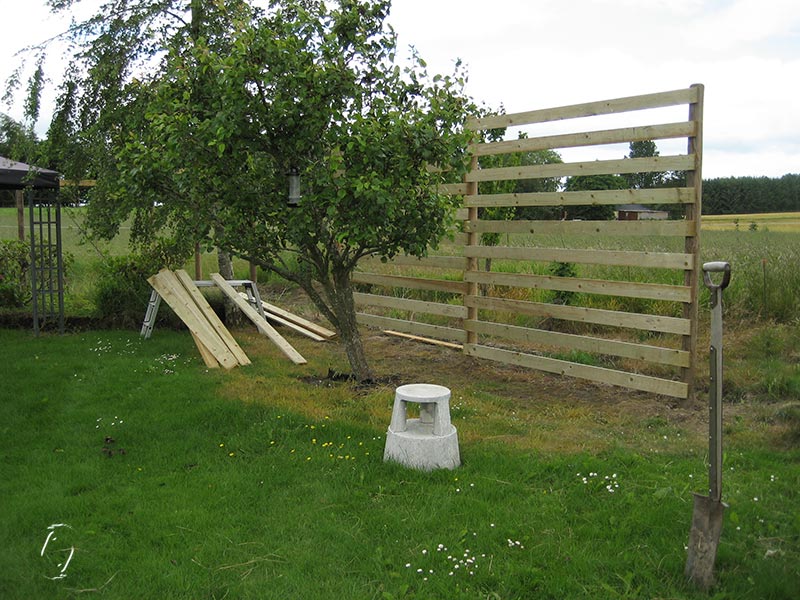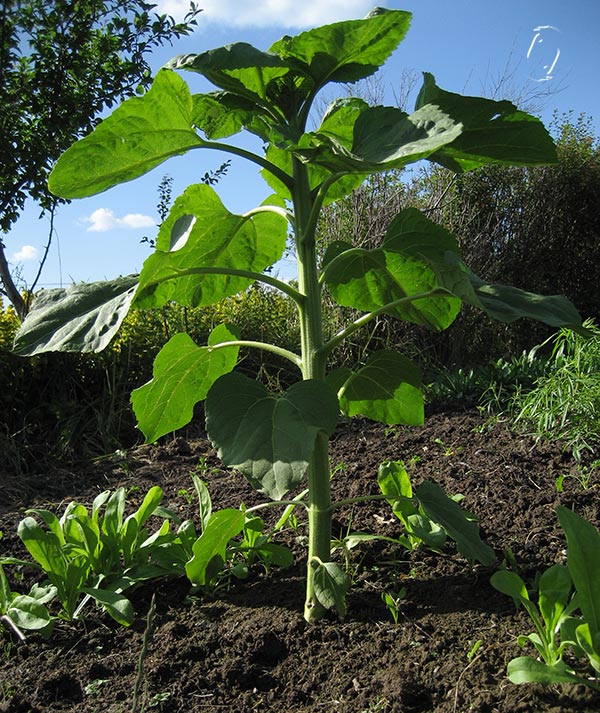Testing the Tagetes patula “French Marigold” in the same way as the first batch.
The dyebath was quite brown compared to the other tagetes, but in the end this skein also came out a strong yellow. They’re not completely the same hue, so this year I’ll probably continue testing them separately.
Two years ago I also dyed with the same flower type and got 3 greens. I suspect that since one skein was copper mordanted, it simply poluted the dyebath, and not because the flowers or my method that year were any different.
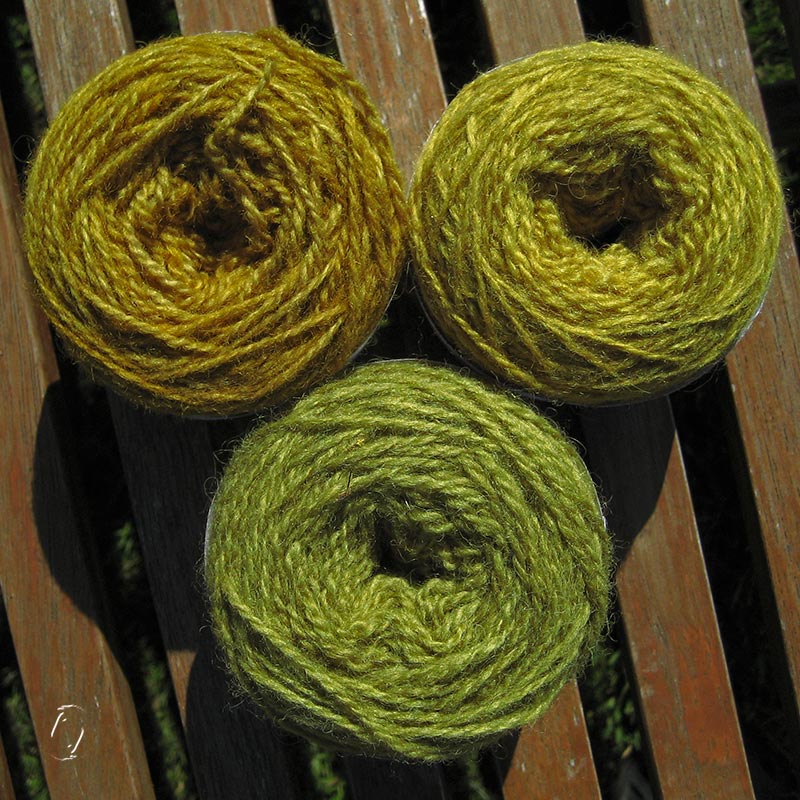
This is the reason I prefer modifying with iron and copper rather than mordant, even if I rinse the skeins well. But at least we know this dye can be modified, so I’ll be testing that as well. They may also become one of my choices for testing the rhubarb mordant vs. unmordant and alum in terms of colour and lightfastness.
på dansk
Samme test pÃ¥ denne tagetes som pÃ¥ den foregÃ¥ende, ogsÃ¥ med flot resultat. De tre grønne er fra forrige Ã¥r, hvor det ene var kobberbejset, sÃ¥ jeg mistænker at det har “forurenet” hele farvebadet. Men det kan jo ogsÃ¥ være interessant. Jeg foretrækker dog at tilføje jern og kobber efter farvning, af samme Ã¥rsag.

